With the Devon drizzle behind him, Peter Haigh reflects: “Brunel said it would cost no more to maintain than anywhere else.” He adds, however: “Mile for mile, it is the most expensive piece of railway in the UK.
“I probably spend 20% of the year thinking of it - it takes up a disproportionate amount of my time.”
‘It’ is the famous section of railway that runs along the sea wall between Dawlish Warren and Teignmouth. Haigh is Network Rail structures management engineer for the West Country.
After the train leaves Exeter St David’s, sitting on the left-hand side is recommended for most of the next 20 miles.
Once it crosses the flatlands near Exminster, the River Exe hoves into view, and the glistening blue English Channel can be seen in the distance.
At Powderham, with the castle on the right surrounded by trees and grazing deer, the railway kisses the river and doesn’t leave the waterside until Newton Abbot.
As the train passes Starcross, passengers can see Brunel’s atmospheric pumping station, still standing more than 150 years after it was built. The train continues towards Dawlish Warren, with passengers able to see across the bay to Exmouth. They may even see a First Great Western diesel multiple unit scurrying along the branch on the other side of the water.
The train rushes through Dawlish Warren (well, most do), with its holiday camps on the right and golf course, car park and sand dunes on the left, and sets passengers up for the main event - the famous sea wall stretch of railway.
Passing Langstone Rock, it sweeps around a long bend and, with Dawlish and beyond in the distance, the train now towers over a golden beach as it races further west. To the left is the Channel, to the right are towering sandstone cliffs, protected from crumbling on to the railway fencing, but still dominating the view.
The seaside town of Dawlish is next. With a population of 13,500, it has a busy station served by FGW local trains, with a few London expresses stopping there too. It has a good commuter market for Exeter, and is roughly 15 minutes by train from Exeter Central, the heart of the Devon capital.
After Dawlish, the train enters the first of five tunnels (Kennaway), and while the beach and sea remain on the left, the tunnels give way to lush green vegetation above and to the right of the railway line. This continues through a further three tunnels (Coryton, Phillot and Clerk’s) where a long sweeping right-hand bend takes the train into the final tunnel, Parson’s, which is also the longest.
The train then bursts out of this, and Teignmouth (15 miles from Exeter St David’s) is viewed. The line sweeps along the coast, and again the cliffs dominate the view. As the train rounds another sharp right-hander at East Cliff, it sweeps through Teignmouth station and along the River Teign, hugging the river until Newton Abbot, where the breathtaking sea views are replaced by those of Devon’s rolling hills.
It really is one of the most spectacular sections of railway in the UK. It is popular with enthusiasts and photographers, and on many trains you will see passengers returning waves to those walking along the public footpath that also forms part of the wall between Langstone Rock and Dawlish and along the Teignmouth section. It is forever etched in memories of people who saw steam rush along it, followed by the hydraulics and later locomotives like the Class 45s, 47s and 50s.
But that is the romantic side of it, the side of it which those with a passion for railways see, the side of it that passengers see. However, it has a different side, a very challenging side, and one that ensures Network Rail is forever working to ensure this busy stretch of railway operates.
Haigh is in charge of ensuring that the wall remains safe to operate trains on. Based in Exeter, he is responsible for all structures west of Bristol, including the Royal Albert Bridge and the many tunnels and viaducts.
This section of railway is busy, with FGW, CrossCountry and South West Trains operating services, while on summer Saturdays there is an increased level of service to deal with the sheer number of holidaymakers travelling along the route.
Freight travels along it, too, although not in the numbers it once did. DB Schenker is the main operator, with the remains of the china clay traffic still heading north. Freightliner Heavy Haul also runs trains to the West Country. These heavy aggregates trains test the foundations of the historic wall.
Early warning system
Network Rail has only recently completed a lengthy track renewal project on the line, while route stabilisation work is also being undertaken on the cliffs to ensure there are no problems there.
“It is a two-pronged problem,” Haigh says, talking about what he has to deal with on the wall. “The cliffs are soft sand, and are attacked by rainwater, groundwater and seawater, so they need stabilising.”
And, he explains, speed restrictions are not just in place when the seas are rough. “We used to do a blanket speed of 20mph for
heavy rain. That was during mostly torrential rain and the length of time it rained. This used to be the case because we were unsure if there would be rock fall caused by the rain.” This has seen netting erected on the cliffs, which is in place for the majority of the route.
“An early warning system was also introduced and this tells us if there is any movement.” This system works by sending a message to Exeter power box, which acts accordingly by implementing the speed restrictions. “There is more predictability now,” Haigh says. “Services are not as affected.” This system allows a normal service to run, which in turn has helped performance, he adds. While the cliff stabilising has been ongoing for several years, the early warning system was introduced in January last year.
Haigh has also used a helicopter to assess the wall and cliffs. “We did this for reference, and you get the bird’s-eye view. You spot erosion and get an overall view.”
The sea wall, he says, is man-made, and this brings certain problems when nature tries to interfere. Sand does worsen the problems, he says, and one major issue centred on the foundations where sand was eroding the stone. This could see five feet of stone eroded, which seriously affected the safety of the wall.
“In British Rail days we repaired the wall with concrete. We would cut two metres into the rock and create a step profile.” The foundations, Haigh explains, are sealed and not hollow. “The step effect breaks up wave energy and is therefore less detrimental to the wall.”
There are, he says, parts of the wall that are particularly vulnerable to wave energy, with one being between Parsons Clark and Spray Point, near Teignmouth. This area has a large number of rocks placed there for sea defences, while Spray Point, which acts as a breakwater, is more exposed to the elements as it sits further out into the Channel.
“We have sorted out the foundations for now,” says Haigh. “It is difficult to say how long they will last. It could be 30 years.”
The main problems affecting the wall, he says, are the rising sea levels, which will mean workmen will have less time to undertake repairs, and the change of weather patterns. The weather, with more rain and more frequent storms, has seen an increase in white-water conditions, he says, and this is more damaging. “We tend to find winter and spring are the worst times for problems.”
The waves, Haigh explains, exert a lot of pressure on the wall. “No matter how well it is maintained, there will be punctures and the water will get in.”
Prevention therefore, is paramount. “Like all good maintenance, it starts with inspection,” Haigh says. “Amey look at it and Network Rail also have annual inspections. These will probe and abseil while we also have additional monthly examinations and I get the results. There is also an adverse weather inspection, and this is based upon a wind and tide matrix.”
The elements that cause damage are, according to Haigh, winds travelling from a south to south-east direction. This causes the tide height to rise, and when it reaches a certain combination, the line speed is reduced to 20mph and a NR staff member travels in the cab of a train to assess the severity of the situation. “If it gets really awful, we close down completely. I cannot remember the last full closure.”
If a problem is noticed from the cab by NR staff, all trains are stopped until inspections are undertaken to assess damage. Dyer and Butler, a contractor that has a three-year deal to maintain the wall, undertakes repairs. Haigh passes the instructions on the repairs to the contractor and priorities are decided.
Climate change challenge
When it comes to maintenance, he says, “I hold regular meetings with the contractors, and we shift priorities regularly. You have to consider that we have a main line situation here, but it stands on a man-made structure.” Haigh will get involved when, as he puts it, “things start getting fraught”.
Sand moved by long-shore drift is another problem that affects the wall. This is also sometimes known as drifting and is the movement of sediments along a coast parallel with its shoreline.
When waves break, they carry sediment up the shore in a white frothy surge called swash and take it back in the backwash. When swash approaches the shore at an angle, it carries and deposits sediment along the beach, but the backwash always carries sediment straight from the shoreline following the steepest gradient. This produces a zigzag effect. Where waves are strong, the coast will erode and sediment will be deposited where waves are weak. Wave strength is dictated by the strength of the prevailing wind. Constant erosion can change the shape of the beach, but it can be defended using groynes, which act as barriers to physically prevent sand moving.
“In our area it is normally caused by prevailing winds from south-west to north-east and it affects everyone. We monitor the sand levels. The groynes help reduce the problem, but it is a natural phenomenon. The Victorian builders probably did not realise that water did this.”
But there are two things that are helping, says Haigh. The first is that coastal groups have been established and are talking to each other about a coastal monitoring project. This, he says, is more use to people designing and doing investigations into preventing further problems, and will also help with long-term considerations that will be required.
“I think the wall is in almost the best condition it has ever been in. An evolutionary process has caused that. It is what British Rail, Railtrack, the Great Western Railway etc have all done. They have identified problems, and they have sorted them out.”
And the future? “Climate change means we have to get our thinking caps on. Even if the sea got a little higher, that is not an issue as we’ve got a dedicated maintenance programme for that.”
Haigh says a number of agencies involved in protecting the wall - including Teignbridge District Council, the Environment Agency and DEFRA - have contributed to a shoreline management plan which assesses the next 100 years. It looks at a number of options in 25-year windows. The questions asked include what is happening to the coastline, can the line be held, can realignment be managed, do we intervene, and is there no active intervention? A second plan is being drawn up now.
One option would have been rock armour, which is already in place at several sites along the wall. “Rock armour would not be received well by local authorities,” says Haigh. “It becomes a climbing area for children, which is dangerous, cycling would need to be banned and it affects people walking. We get complaints about it now.”
Network Rail is looking at feasibility processes, with the scope of aligning it with the aspirations of the next 100 years.
“What do we need to know?” asks Haigh. “We use information on coastal processes and experience from the wall, as well as looking at similar structures. This will start its long-term future. There needs to be a debate after that is complete about what happens as there are so many issues to consider.
Haigh moved to the West Country in 1980 and has been looking after the wall since ‘probably 1981’. He says he knows every inch of it and that the job is ‘challenging and interesting’. It is, after all, “the most talked-about section of railway”.

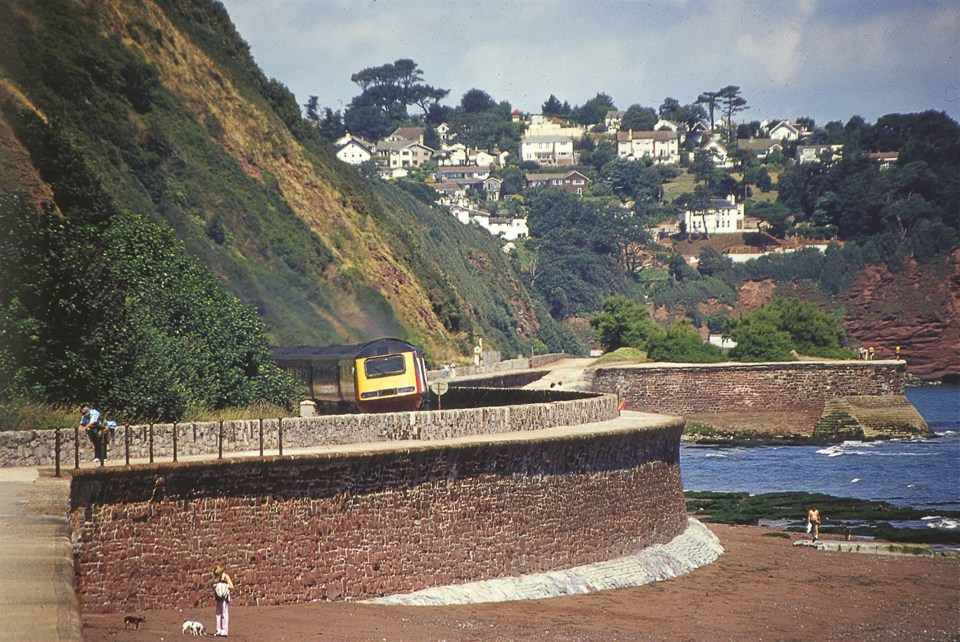
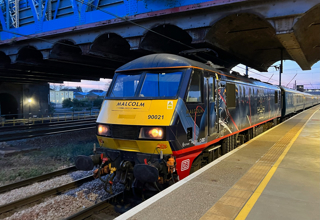
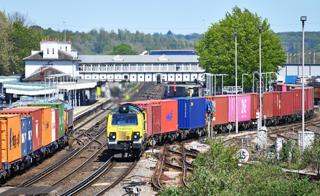
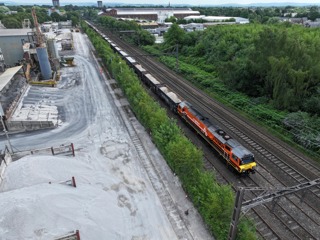
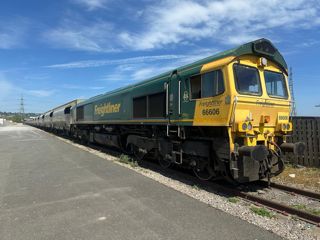
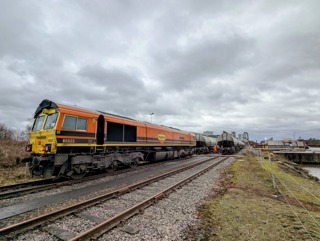










Login to comment
Comments
No comments have been made yet.